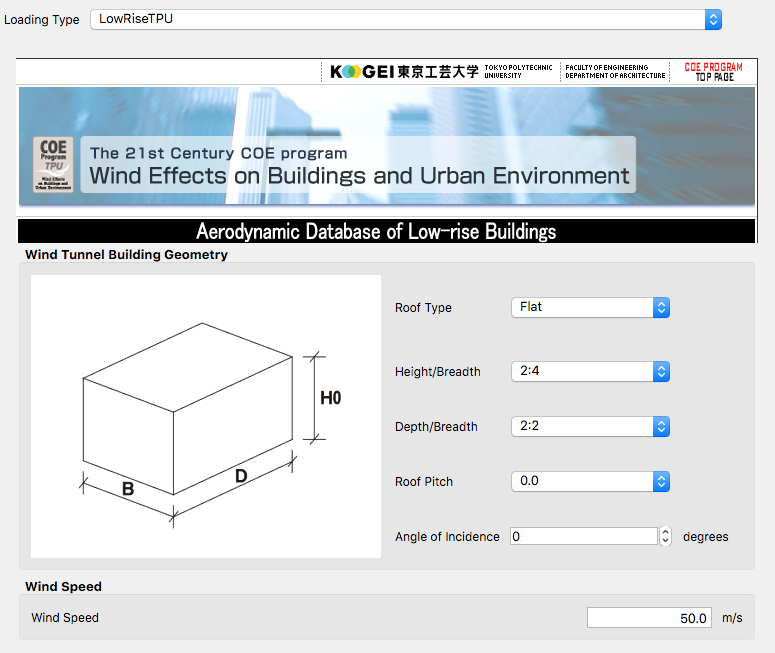2.4.6. Data from Tokyo Polytechnic University
For this event type, full-scale floor loads are generated utilizing wind tunnel data made available by Tokyo Polytechnic University, specifically their TPU Aerodynamic Database. The TPU Aerodynamic database provides a number of databases. Currently, this tool utilizes data provided for Low Rise Buildings Without Eaves. This database provides wind tunnel data of wind loads on low-rise buildings with gable, hip, and flat roofs. Information on the data and how it was obtained is provided in their documentation. The important wind field information: The turbulence density at a height of 10cm was about 0.25. The test mean wind velocity at this height was about 7.4m/s, corresponding to about 22m/s at a height of 10m in full scale. The tests were performed on a limited number of buildings with different aspect ratios and wind coming from different angles on the building.
As will be discussed in the theory section, the wind loads are obtained from the pressure tap data by determining a length factor and a velocity factor. The length factor is determined by the building height. The forces, unlike in DEDM-HRP, are determined from the building dimensions provided in the general information sheet and the length and velocity factors.

Fig. 2.4.6.1 Low rise TPU wind loading event.
Inputs for this event type, as shown in figure Fig. 2.4.6.1 require the user to specify which of the following tests to use:
The roof type (currently only flat is supported).
One of four height-to-breadth ratio options.
One of three depth-to-breadth ratios.
A roof pitch.
The angle of incidence, 0 through 90 in 15-degree increments.
Mean Wind Speed: The wind speed provided is used in determining the velocity factor and the applied loads.
Random Variables: For this event, the wind speed can be a random variable.